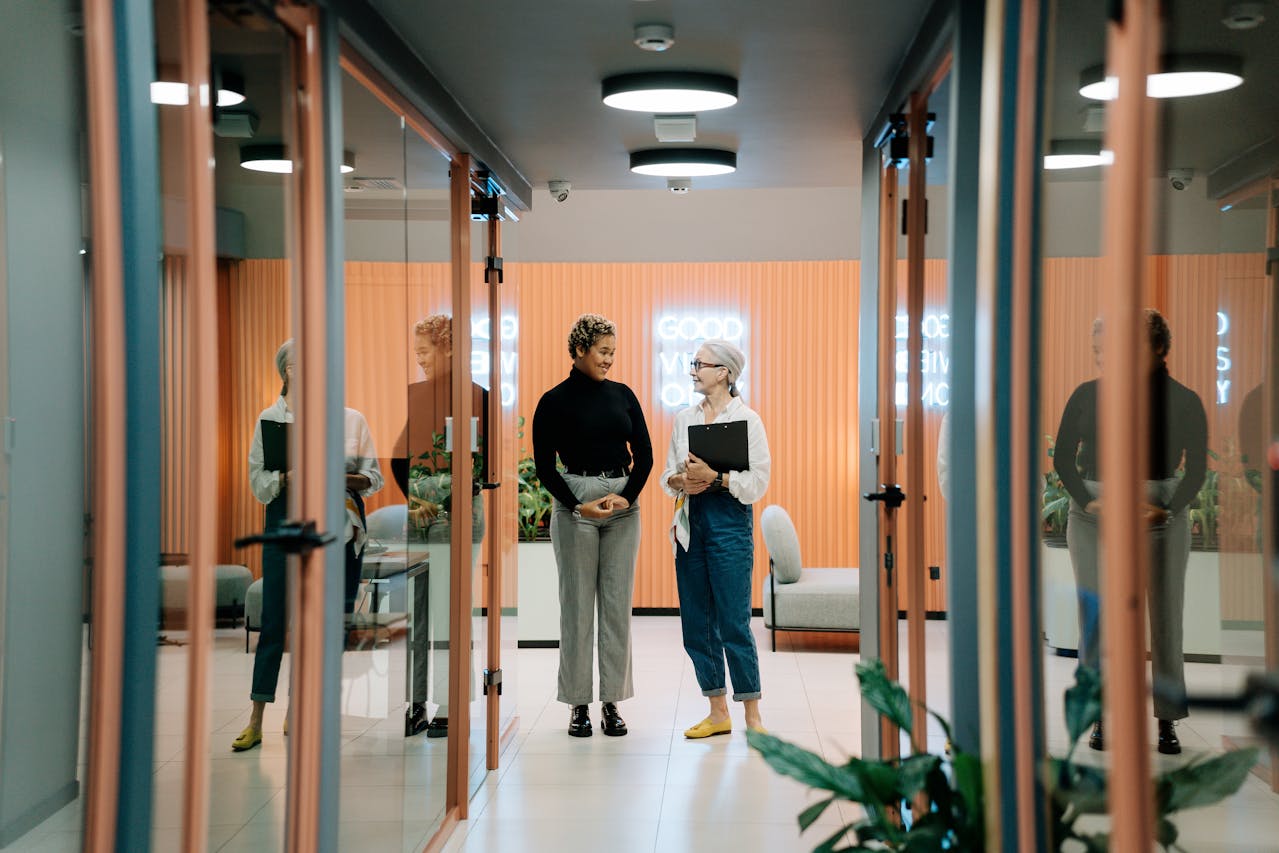Earlier this summer, McKinsey Global Institute published a detailed report on the future of offices and hybrid working. The least we can say is that the sector is in for a profound upheaval! Here’s a 4-point analysis.
1. Desertion of city centers and the rise of hybrid working
First lesson: the pandemic has triggered a vast population shift across the globe. More specifically, the heart of cities has emptied out in favor of the suburbs. Central New York, for example, lost 5% of its population between mid-2020 and mid-2022, while San Francisco lost 7%. This trend was observed in most of the (mainly American) cities studied in the report.

Whether as a cause or consequence of this migration, telecommuting has developed apace and is now an integral part of corporate life. In October 2022, the average office presence is 3.5 days a week, according to McKinsey (from 3.1 in London to 3.9 in Beijing).
However, this rate varies greatly according to industry and company size. The larger the company and the more its activities are linked to the knowledge economy (services, information, finance…), the less likely employees are to come into the office, as the graph below shows.

2. Falling demand for office space
The logical consequence of this trend is that demand for office space is set to fall by 13% between 2019 and 2030 in the world’s major cities! This drop could even reach -38% (severe scenario), depending on the city and its characteristics (density of existing office space, high cost of housing, presence of major employers in the knowledge economy).

In fact, office vacancy is already a reality. In the United States, commercial real estate transaction volumes have melted by 57% and rents have fallen by 22% between 2019 and 2022.
In the scenarios we’ve modeled, the amount of office space in demand in most cities doesn’t return to pre-pandemic levels for decades. By 2030, demand is up to 20% lower than it was in 2019, depending on the city,” the report states.
As a result, the total value of the world’s office real estate stock is expected to fall by between -26% and -42% between 2019 and 2030.
3. The era of hybrid offices
Following this gloomy picture for the sector, McKinsey sketches out some trends on what tomorrow’s offices will look like. On the one hand, offices will become increasingly hybrid. In other words, they will integrate other uses in the future.
The most ambitious vision is that of a universal, “use-neutral” building, whose design, infrastructure and technology could be easily modified to suit different uses. Imagine a medical building that could be easily converted, for example, into a hotel or apartment building if customer preferences changed,” says McKinsey.
More modestly, buildings could increasingly accommodate different degrees of collaborative and individual working, or different open and closed office arrangements.
4. Offices that are “worth the trip
Beyond spaces as such, the fundamental question for the future of offices is their added value for a company’s employees. In other words, both employers and developers need to think about how these buildings can “earn the commute”, by focusing on better experiences.
For example, the office doesn’t just have to be a place to work; it can also be a place where employees enjoy the amenities provided by their employer, such as common outdoor spaces and attractive events. Office tenants can try to attract them by building “magnetic” workplaces focused on hospitality.”
Quite a program!
Discover our trainings :



 training.isarta.com
training.isarta.com 

